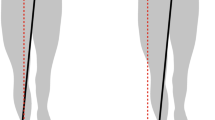Abstract
Unlike intact animals, cockroaches with bilateral circumoesophageal connective lesions have difficulty climbing up smooth inclines. Typically, they slipped badly or even fell over backward before traveling more than 1.5 body lengths up the incline. The major problem involves increased slippage of the front and sometimes middle legs. Periods of front leg slipping are correlated with excess body elevation that pushes the height of the head to 11 mm above the substrate. Intact animals control body attitude very well on the incline, only rarely rearing above 11 mm. Cockroaches with bilateral circumoesophageal connective lesions spend considerable time above this critical amplitude and slipping increases with amplitude above that value. We conclude that circumoesophageal lesion compromises the insect’s ability to control body attitude on the incline and this deficit contributes to the inability of lesioned cockroaches to climb steep inclines. A separate body attitude deficit was noted on steps. Upon climbing to the top of a barrier, intact animals bend their body between the first and second thoracic segments. This action maintains good leg mechanics throughout the climb. Cockroaches with bilateral circumoesophageal connective lesions fail to perform this downward flexion. A beneficial role for similar body flexion in simple robots is described in the Discussion.










Similar content being viewed by others
References
Allen TJ, Quinn RD, Bachmann RJ, Ritzmann RE (2003) Abstracted biological principles applied with reduced actuation improve mobility of legged vehicles. IROS, Las Vegas
Bässler U (1986) Afferent control of walking movement in the insect Cuniculina impigra. I. Decerebrated animals on a treadband. J Comp Physiol A 158:345–349
Bässler U, Büschges A (1998) Pattern generation for stick insect walking movements—multisensory control of a locomotor program. Brain Res 27:65–88
Duch C, Pfluger H-J (1995) Motor patterns for horizontal and upside down walking and vertical climbing in the locust. J Exp Biol 198:1963–1976
Dürr V (2001) Stereotypic leg searching movements in the stick insect: kinematic analysis, behavioural context and simulation. J Exp Biol 204:1589–1604
Dürr V, Brenninkmeyer C (2001) The use of the antennae in tactile obstacle localisation in the walking stick insect. Int Congr Neuroethol 6:263
Gorb SN, Beutel RG, Gorb EV, Jiao Y, Niederegger S, Popov VL, Scherge M, Schwarz U, Voetsch W (2002) Structural design and biomechanics of friction-based releasable attachment devices in insects. Integr Comp Biol 42:1127–1139
Graham D (1979) Effects of circum-oesophageal lesion on the behaviour of the stick insect Carausius morosus. II. Changes in walking co-ordination. Biol Cybern 32:147–152
Horseman BG, Gebhardt MJ, Honegger HW (1997) Involvement of the suboesophageal and thoracic ganglia in the control of antennal movements in crickets. J Comp Physiol A 181:195–204
Jiao Y, Gorb S, Scherge M (2000) Adhesion measured on the attachment pads of Tettigonia viridissima(orthoptera, insecta). J Exp Biol 203:1887–1895
Jindrich DL, Full RJ (2002) Dynamic stabilization of rapid hexapedal locomotion. J Exp Biol 205:2803–2823
Larsen GS, Frazier SF, Fish SE, Zill SN (1995) Effects of load inversion in cockroach walking. J Comp Physiol A 176:229–238
Martin-alvarez A, DePeuter W, Hillebrand J, Putz P, Matthyssen A, DeWeerd JF (1996) Walking robots for planetary exploration missions. Second World Automation Congress, Montpellier
Nelson GM, Quinn RD, Bachmann RJ, Flannigan WC, Ritzmann RE, Watson JT (1997) Design and simulation of a cockroach-like hexapod robot. In: Proceedings of the 1997 IEEE International Conference on Robotics and Automation, Albuquerque
Quinn RD, Nelson GM, Ritzmann RE, Bachmann RJ, Kingsley DA, Offi JT, Allen TJ (2003) Parallel strategies for implementing biological principles into mobile robots. Int J Robot Res 22:169–186
Ritzmann RE, Rice CM, Pollack AJ, Ridgel AL, Quinn RD (2001) Roles of descending control in locomotion through complex terrain. Int Congr Neuroethol 6:290
Roeder K (1937) The control of tonus and locomotor activity in the praying mantis (Mantis religiosa L.). J Exp Biol 76:353–374
Roeder K, Tozian L, Weiant E (1960) Endogenous nerve activity and behaviour in the mantis and cockroach. J Insect Physiol 4:45–62
Saranli U, Bueler M, Koditschek D (2000) Design, modeling and preliminary control of a compliant hexapod robot. International Conference on Robotics and Automation, San Francisco
Schaefer PL, Ritzmann RE (2001) Descending influences on escape behavior and motor pattern in the cockroach. J Neurobiol 49:9–28
Spirito CP, Mushrush DL (1979) Interlimb coordination during slow walking in the cockroach. I. Effects of substrate alterations. J Exp Biol 78:233–243
Stange G (1981) The ocellar component of flight equilibrium control in dragonflies. J Comp Physiol A 141:335–347
Tang TP, MacMillan DL (1986) The effects of sensory manipulation upon interlimb coordination during fast walking in the cockroach. J Exp Biol 125:107–117
Watson JT, Ritzmann RE, Zill SN, Pollack AJ (2002a) Control of obstacle climbing in the cockroach, Blaberus discoidalis I. Kinematics. J Comp Physiol A 188:39–53
Watson JT, Ritzmann RE, Pollack AJ (2002b) Control of obstacle climbing in the cockroach, Blaberus discoidalis II. Motor activities associated with joint movement. J Comp Physiol A 188:55–69
Acknowledgements
Supported by grants from Eglin AFB (F08630-03-1-0003) (R.E.R. and R.D.Q.), NRSA grant F32-NS43004 (A.L.R.) and undergraduate student research fellowship (J.A.) from to HHMI grant 52003721 to Case Biology Department. We thank David Howard for contributions to studies of body flexion on steps.
Author information
Authors and Affiliations
Corresponding author
Rights and permissions
About this article
Cite this article
Ritzmann, R.E., Pollack, A.J., Archinal, J. et al. Descending control of body attitude in the cockroach Blaberus discoidalis and its role in incline climbing. J Comp Physiol A 191, 253–264 (2005). https://doi.org/10.1007/s00359-004-0537-0
Received:
Revised:
Accepted:
Published:
Issue Date:
DOI: https://doi.org/10.1007/s00359-004-0537-0




